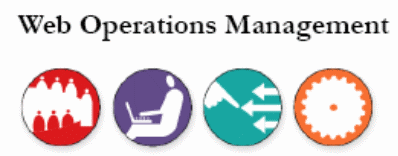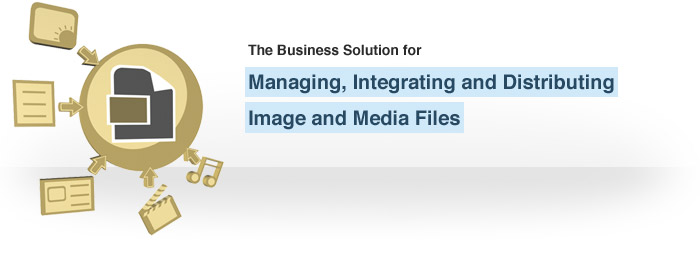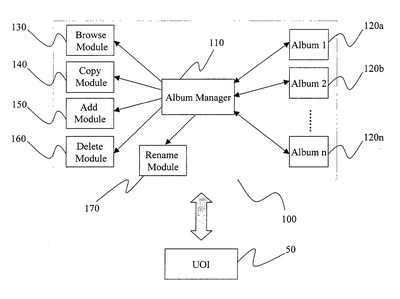Introduction
According to the expert analysis operations management deals with all the operations inside an organization. The management includes an extensive range of exploit and involves; excellence control, logistic, assessment, managing purchases, record control, and product intend and manufacture management (Skills and Practice). Operations management is distinct as the management organization or processes that generate good and /or provide repair. Furthermore, it implements the policies and everyday jobs needed to get together an organization’s customers, workers, and management (Dictionary).

According to the expert analysis in order for an organization to be winning it must focus on the result, depending on the repair provided and the manufactured goods, it can mainly vary. Let’s take the example of healthcare, for instance, the product is enduring, making this service obtainable in the advertising should be affordable and by means of high excellence and high principles, this will win over patients. Primarily the organization is supposed to employ towards scheming the services they will supply based on the persist in the community.
Producing amazing that is by now there or provided by a nearby hospital is usually not going to create a winning hospital. The objective would be to plan for a suitable location where the need is there and high excellence care and principles determination be achieved.
Operations Management plays a key position in achieving the major presentation objectives of Tesco (Rad, P.F. & Levin, G, 2005). Whether the present operation objective is to get better client service or to increase productivity, the way in which Tesco utilizes its capital will have an important crash. As a result, there have been a number of ground-breaking developments in Operations Management that have required to make use of Tesco capital in a significantly new way in order to create a big step modify in performance. Tesco is a winning instance of operations management; though, through our investigation they too have some demerit in their operations management require being better.

No doubt, In this document we focus on the association between commerce strategy and person resource management strategy and the crash that this association has on presentation in U.S.-based Japanese subsidiaries (Amin, A. and Thomas, D, 2002). We first describe a hypothetical framework that incorporates fresh thoughts in strategy and international person resource management and openly attempt to give details on the relationships flanked by business-level strategies and person reserve management strategies and outcomes. We then test this replica in a study of commerce strategy-HRM linkages in sixty-four U.S.-based Japanese subsidiaries.
If we analyze then we come to know that this research focused on this truth that a second beneficial purpose served by this learns is the insight it provides concerning organizational action in environments of sharp uncertainty (Jensen, A.J. & Sage, A.P, 2000, 33-61). The current hypothetical assumptions fundamental conceptual and experiential work on the relations between HRM practices and commerce strategy are ones of unforeseen events [Baird & Meshoulam 1988; Lengnick-Hall & Lengnick-Hall 1988].
These suppositions are twofold. First, it is unspecified that the assortment and mix of human reserve practices are strong-minded by the exact strategy a firm adopts, which is itself prejudiced by ecological constraints. Second, it is unspecified that firms achieving a tighter fit stuck between ecological constraints, strategy requirements, and HRM events will perform better than persons that do not (Anderson, J. R, 2001). Achieving a fit stuck between environment, strategy and HRM is easier said than done for most industry units beneath usual circumstances. Under circumstances of increased assortment and doubt, a state of affairs encountered by TNCs, the challenge is flat greater.
Regulatory differences stuck between home and host state, cultural differences between the head office workers and the host state labor force, and physical distance from the close relative corporation all imbues the behavior of ecological scanning, strategy formulation, and strategy implementation with substantial vagueness. Achieving fit under such conditions is probable to be simultaneously additional significant and more complicated to achieve.
Operations Manager of the organization
Organizational operations managers engage in recreation one of the majority very important and important roles in the release systems, the criteria for their achievement (or failure) may face troubles. Moreover, the dangerous role of the operations executive has been taken flippantly in its growth. Therefore, the skills and characteristics of physical condition care operations managers are distinct (Antonelli, C, 2005). An effective operations executive must go after these distinct functions in all scientific areas. Operations manager’s transport to physicians and everyone other who transport is concerned the tools essential to transport that care. Without a person’s tools, very little physical condition care be able to be delivered.

Impact of Management Function on Operations Management
Planning is the majority important purpose of operations management. An organization has to diagram the goals and set priorities, this determination, in turn, permits management to decide and deal out the work weight. If an organization lacks planning after that they would not be conscious of the result being achieved and has the possibility to fail rather rapidly. Planning decides what has to take place in the prospect and generating the deed diagram.
For the work to be conducted inside the idea of operations management, organizing is the next step and plays a significant role (UoP Simulation, 2007). This consists of distributing and configuring capital to achieve the goals and objectives that were recognized in the planning procedure. Within this purpose, the workload can be divided into appropriate separation, skill, and classifications. Organizing makes the most excellent use of the obtainable resources necessary to productively take out the plans. Management monitors and oversees the development of each useful collection and the delegated tasks.
Once the plan is input and organizing has been finished, next is the management most important, establishing and influencing the way of the staff. Employees require leaders who can communicate efficiently and help direct them in the ordinary goals they split. Management has to necessitate the skills to inspire their employees and give confidence high- performance. This in time can create a high rate of manufacture and a gainful organization.
The controlling purpose is monitoring and altering resources in order to stay achieving the goals and objectives (Lok, P., Hung, R., Walsh, P., Wang, P., & Crawford, J, 2005). This as the others plays a significant role and successful decision-making control has to always be followed by continuing feedback and correct or update the first plans. If this purpose were detached, then the organization could not shift forward or produce in the prospect.
Effective management is accomplished from side to side the four functions of management; planning, organizing, most important, and controlling. Managers should be relevant to the four functions pertaining to recruitment, physical resources, and in order knowledge. These four functions of management collision the operations management hypothesis which deals through the whole operations inside an organization.
Planning
Planning is selecting priorities, consequences, goals, and objectives and how these consequences determination be achieved (Skills and Practice). Planning characteristically includes identifying the goals, objectives, and techniques that are wanted to be approved out. This pace decides what has to occur in the future and then generates the majority suitable deed plan. Management wants to first make a decision on the capital that is wanted to ensure the objectives are met. Planning can be nearly everyone hard pace, but in the end, can save occasion and cash. Some examples of planning include scheme planning, staff planning, publicity, promotions, and commerce planning.
Organizing
Organizing consists of distributing and configuring capital to achieve the goals and objectives that were recognized in the planning procedure (Skills and Practice). In this procedure, organizational charts or a variety of methods may be second-hand to outline the sensible responsibilities and a sketch of the resources wanted. Organizing makes the most excellent use of the obtainable resources necessary to productively carry out the plans. Management monitors and oversees the development of each useful collection and the allocated tasks. Examples of organizing comprise; organizing workspaces, recruitment, and processes inside the organization.
Leading
Leading consists of establishing authority and influencing the populace to follow and follow the decided direction by the director. The director will determine and track the practical teams and make sure his or her tasks have been approved out with an agreement to the organizational goals. Within the most important role, management must require the skills to inspire their workers and encourage high- presentation.
Controlling
If we analyzed then we come to know that this is the coordinating, monitoring, and adjusting the capital and processes to attain the set goals and objectives in an operational and specialized mode (Skills and Practice). Managers will path to ensure the essential tasks have been implemented in agreement with the organizational goals (Barney, J, 2003). They in addition require communicating with all workers the goals and strategies of the organization in order to stay them aggravated and all ears.
Supply Chain Management
In current years supply chain management (SCM) has received a huge deal of trade press and academic concentration. For numerous chief executive officers (CEO) the time has come to shift notice to their supply base and hug the principles of SCM. The resource-based approach to planned management suggests that spirited advantage can be found in the varied resources and ability a firm controls. Resources that are valuable, rare, hard to duplicate, and can be browbeaten by the organization can create sustained competitive benefit and earn over standard financial performance. Numerous management specialists propose that companies that learn to get bigger their organizational supply chain management will have a spirited advantage. This learns looks at the conquest that Nokia has had in the organization supply chain in Turkey (Bashein, B. J., 2004, 7-13).
In a globe where products are copied approximately as soon as they are set up into the market, building and supporting spirited advantage is the main anxiety for today’s CEOs. For this reason, there is a brawny link between how firms manage their people and the financial results achieved.
Results from studies of five-year staying power rates of initial public offerings; studies of output and stock price in large samples of a corporation from manifold industries; and thorough research on auto, clothing, and other industries shows that substantial gains of about 40% can be obtained by implementing high-performance management practices. An additional purpose of this paper is to increase about to happen into supply chain ability and the factors that get better its growth. If members of a supply chain are to flourish together they must admit that a learning environment improves the overall efficiency of the supply chain as well as the aptitude of the entity members (Stump, R. L., 2001, 29-48).
One significant management practice for lots of companies in the association that they have by means of their suppliers. Supply chain partnerships are relationships flanked by two or more self-governing entities in a supply chain to achieve exact objectives. Basically, these partnerships are usually created to add to the financial and operational presentation of every channel. These objectives are talented from side to side reductions in total costs, reductions in inventories, and greater than before levels of shared information. Over a period of time, these partnerships can develop and lead to better service, technological novelty, and product design.
Organization’s Operations system
Organizational Performance Analysis “Organizations can more willingly monitor and change the position their operations in fast-paced, spirited environments, when their presentation dimension systems provide them with relevant, timely, whole, and accurate in order” (Jensen & Sage, 2000). Professor Orraca asked his group of students to compare and difference two simulations addressing presentation metrics and organizational presentation (Barney, J, 2001).
The first imitation listening carefully to the wants of the University of Santagreen (UoS) and the other listening cautiously on Thistle Woods Hospital. This document will speak to the indicators of every organization, metrics used for capacity, established principles for measurements, a crash of systems thoughts, and the impact of enhancement on other parts of the organization. Let us seem at every area and how each organization deliberates up during the imitation.
Performance Indicators
Performance indicators are the capacity to quantify commerce goals. Indicators can assist an organization to gauge progress towards those goals. Moreover, they can provide insights for civilizing processes, as well as gathering customers’ needs and satisfaction. To be effectual, performance indicators require being: specific, quantifiable, achievable, sensible, and opportune (Wikipedia, 2007). Additionally, to give meaning indicators be supposed to be joined to the organization’s mission declaration or corporate goals (UoP Simulation, 2007). What are a number of the presentation indicators utilized by UoS and Thistle Woods?
The assignment of UoS is “the chase, promotion and spread of knowledge through fineness in teaching processes.” The chancellor was worried about whether or not the college was located for the altering instructive surroundings or if they were losing their status of fineness (Kotabe, M, 2003). They recognized three key presentation indicators: Graduation Rate pointer deliberates by all universities; Faculty-Student Ration – major differentiator and unsafe advertising tip for gaze universities; and, amount of minorities to big positions attracts an additional varied academic body.
Analysis of Operations management
Operations Strategy
According to Slack et al. (2004), operations strategy is distinct as “the total prototype of decisions which form the long term capabilities of any kind of operation and their payment to in general strategy”. Slack et al. (2004) also states that operations presentation objectives tell to the well-being of the operation’s stakeholders. Applying to Tesco, clientele satisfaction is chiefly significant to its business. Therefore in arrange to satisfy its customers and add to competitiveness, Tesco’s operations presentation objectives are mainly reproduced on price, excellence, speed, reliability, and flexibility five aspects. And they determination be analyzed in feature as follows:
With regard to pricing, Tesco each week checks over 10,000 prices in Asda, Sainsbury’s, and Morrisons food to assurance its customers have low prices each day (See Appendix 2: Table 1). And it as well took steps to decrease costs in order to make sure that the way they employment is better, simpler, and cheaper (Amstrup, N, 2003). For example, the cause of Tesco has an effective provide chain is since of implementing a suitable information skill G.O.L.D. application suite productively (Kogut, B, 2004).
This software provides Tesco with total control over the storage stack. Moreover, the routine order proposals and store optimization procedures make easy fast, and flexible commerce by means of negligible logistic costs (Kocevar, 2003). Therefore, by responsibility things inexpensively, it will allow Tesco to decrease its price in arrange to gain higher volumes or add to their productivity on obtainable volume levels outwardly. And inside, cost performance is helped by high-quality presentation in the other presentation objectives.
As Slack et al. (2004) point out that excellence is an exacting important object to all operations, as excellence is an important feature of customer approval or displeasure, and quality operations might both reduce expenses and add to dependability (Metrics, 2007).
For a grocery seller, excellence could denote goods are in a good state, the store is clean and neat, the decor is suitable and attractive and staffs are courteous, welcoming and helpful, etc., so according to our investigate with Tesco store boss, he stated that Tesco has position more employees into stores and sharing centers in order to get better its ease of use and repair. Moreover, Tesco also launched Clubcard that in the order provided by it enables Tesco to improve its understands their clientele.
Conclusion
To sum up this discussion we may say that the four dissimilar functions of management crash operations management hypothesis inside an organization daily. Effective management is talented from side to side the four functions of management: planning, organizing, most important, and controlling. The four functions are extremely integrated when approved out day-to-day of running a winning organization (Skill and Practice). Planning, organizing, most important, and controlling all have to be carried out to get together the goals and objectives of the organization and are topics to modify depending on the state of affairs the organization is opposite. Managers need to complete the skills to take out the functions, create decisions about the goals and follow the prospect.
Work Cited
Nigel Slack, etc. OPERATIONS MANAGEMENT, 5th Edition Finacial Times, Prentice Hall. Dictionary (2006). Web.
Skills and Practices in Organizational Management (2006). Web.
Jensen, A.J. & Sage, A.P. (2000). A systems management approach for improvement of organizational performance measurement systems. Information, Knowledge, Systems Management, 2, 33-61. Web.
Key Performance Indicators. (2007). Wikipedia, the free encyclopedia. Web.
Lok, P., Hung, R., Walsh, P., Wang, P., & Crawford, J. (2005). An integrative framework for measuring the extent to which organizational variables influence the success of process improvement programmes. Journal of Management Studies, 42(7), 1357-1381. Web.
Metrics. (2007). Wikipedia, the free encyclopedia. Web.
Rad, P.F. & Levin, G. (2005). Using metrics as a catalyst achieving successful project performance. allPM. Web.
UoP Simulation. (2007). Apply systems thinking in managerial decision making. Web.
UoP Simulation. (2007). Using performance metrics. Web.
Amin, A. and Thomas, D. (2002) ‘The negotiated economy: state and civic institutions in Denmark’, Economy and Society 25, 2: 255-281.
Amstrup, N. (2003) ‘The perennial problem of small states: a survey of research efforts’, Co-operation and Conflict XI: 163-182.
Anderson, J. R. (2001) Language, Memory and Thought, Hillsdale, NJ: Lawrence.
Andersson, Å. E. (2005) ‘Creativity and regional development’, Papers of the Regional Science Association 56: 5-20.
Antonelli, C. (2005) The Economics of Localized Technological Change and Industrial Dynamics, Dordrecht: Kluwer Academic Press.
Barney, J. (2003) ‘Strategic factor markets: expectation, luck and business strategy’, Management Science 32, 10: 1231-1241.
Barney, J. (2001) ‘Firm resources and sustained competitive advantage’, Journal of Management, 17: 99-120.
Kogut, B. (2004). ‘Normative Observations on the International Value-added Chain and Strategic Groups.’ Journal of International Business Studies 15 (2): 151-167.
Kotabe, M. (2003). ‘Efficiency versus Effectiveness Orientation of Global Sourcing Strategy: A Comparison of US and Japanese Multinational Companies.’Academy of Management Executive 12 (4): 107-119.
